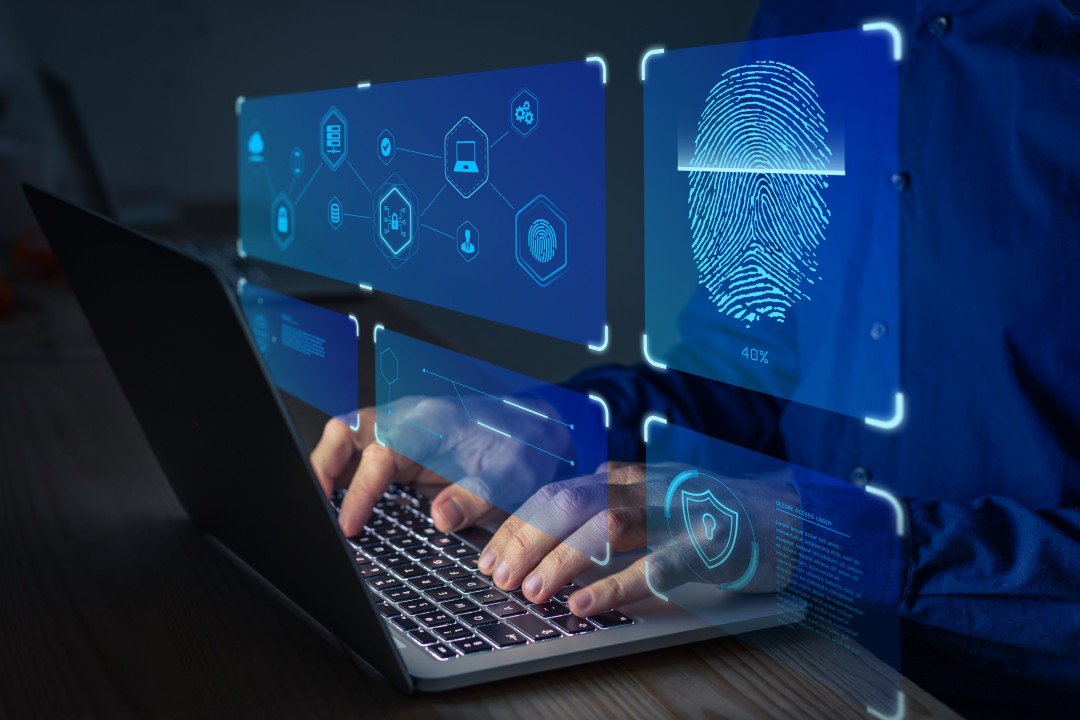Multi-factor authentication (MFA) and Single Sign-On (SSO) can often act as a vital bulwark against potential breaches in high-risk fields. As technology evolves, so do the tactics of attackers; robust security measures are needed to safeguard sensitive information. MFA and SSO not only strengthen a business’s defenses against phishing scams and AI-driven cyberattacks but can also help them align with regulatory standards across various industries. From finance to healthcare, adherence to MFA and SSO protocols can help to protect users’ valuable and sensitive information.
Let’s delve into how the integration of MFA and SSO elevates cybersecurity protocols and explore insights on maximizing their efficacy, including the use of innovative solutions like Photolok.
How MFA and SSO impact cybersecurity
Modern cyber threats often include classic attacks like phishing and spoofing but are quickly evolving to include technologies that are harder to thwart, including machine learning and artificial intelligence programs that can bypass traditional base credentials – passwords and usernames – in a matter of seconds. This leaves businesses and users no time to react to defend their accounts from invasion and potential takeover. In sensitive fields like healthcare, this can be incredibly dangerous for everyone involved, leaving users at risk for debilitating fraud and businesses at risk for legal repercussions.
Multi-factor authentication (MFA) and single sign-on (SSO) technology have become integral parts of cybersecurity as technology advances and the need for stronger security measures increases. These systems help service providers protect their users from threats to their information including phishing scams and AI cyberattacks.
These systems work by layering additional necessary data redirections to access attempts and requiring more detailed information that is harder to acquire in order to gain access.
- MFA requires users to input a secondary set of credentials – biographical or biological information, a secondary device, a physical key, etc. – before they can access their data, which not only prevents access for AI password crackers and spoofs but can also alert the user to unauthorized attempts on their account.
- SSO requires that a user have access to a set of master credentials to access their information, which can make tracking and protecting the data of multiple accounts for multiple pieces of software significantly more streamlined.
By implementing MFA and/or SSO technology, especially when implementing them together, a company can add layers between user data and attackers that can slow their efforts long enough for the data to be secured or completely stop attacks before they can become effective.
Regulatory standards for MFA and SSO integration
Because of their ability to protect information, MFA and, to a lesser degree, SSO have become not just socially accepted standards, but also legal and regulatory standards for many industries.
Particularly, many regulations in finance and healthcare require some form of MFA to be implemented into all patient/client-facing programs to resolve as much legal liability as possible and close any security gaps that could lead to serious danger to the users’ information. SSO is also generally used in these fields on the business’s side to manage internal information access and limit security risks. In healthcare especially, MFA systems and SSO can help facilities stay in compliance with HIPAA, which protects patient privacy.
For many businesses, MFA and/or SSO are necessary to get cyber insurance, which, in a world of high cybercrime rates, is a necessary step for any business that deals in high volumes of and/or highly sensitive customer data. These measures can also help commercial businesses stay in line with the Payment Card Industry Data Security Standard (PCI-DSS), which helps to reduce credit card fraud through stringent data management and access protocols.
How to get the most out of MFA and SSO
As mentioned, to get the best possible security for your data, use MFA and SSO together to create a two-pronged fraud protection system. SSO streamlines and simplifies user access to information while MFA ensures that only authorized users are accessing that information. Together, they can create a system that makes it easy to alert necessary parties to potential data breach attempts and thwart those attempts before they can succeed.
When choosing an MFA solution to implement, make sure that it is easy for users to use and compatible with existing systems in place. You may choose to roll out both systems at the same time for the sake of transition ease and convenience for your users. Be sure to monitor your SSO and MFA systems post-launch to resolve any technical issues that may come up during the transition.
If your business is looking to implement an effective MFA solution, consider opting for Photolok. By leveraging the power of photos instead of traditional passwords or passphrases, Photolok revolutionizes the login process, making it not only simpler but also more secure. Photolok addresses concerns of password fatigue and frustration with complex MFA systems head-on, offering a seamless authentication experience with no language barriers and minimal chances for user error.
With no complex password rules or resetting costs, Photolok streamlines the authentication process, making it both user-friendly and cost-effective. Whether accessed via smartphones, tablets, laptops, or desktops, Photolok ensures online convenience without compromising security.
Photolok also boasts unparalleled security features that can safeguard against many cybersecurity threats, from AL/ML attacks to phishing and ransomware. Its innovative architecture offers situational security through features such as single-use and duress photos, empowering users with additional layers of protection.
If you’re interested in using Photolok for your business, you can contact the Netlok sales team via their website.
Read More: Social Engineering Attacks: How MGM and Others Are Infiltrated
Read More: Passkeys vs. Traditional Passwords in Cybersecurity
Read More: Phishing and MFA: How Attackers Bypass Extra Security Layers

